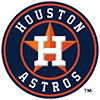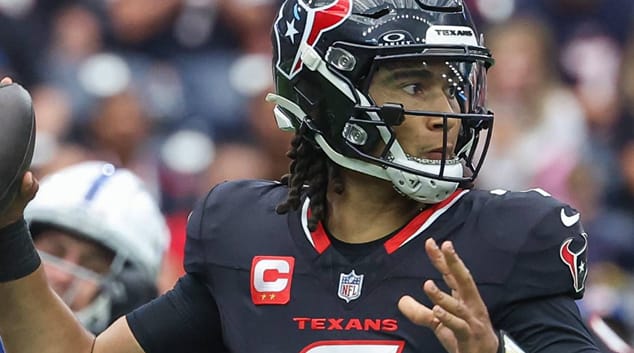It's not surprising to see soft tissue injuries populating the early injury reports from training camp. The pandemic-influenced offseason created unusual circumstances for players, altering their normal offseason routines. Injured players were particularly limited, as some individuals were unable to work directly with team medical personnel during their recovery. Now the players are suffering sprains and strains in varying degrees as they attempt to gear up for the season ahead.
As a result, I decided it may be helpful to do my annual review of how an injury to a muscle or ligament is classified. To start, sprains are injuries that involve ligaments while strains are muscle-related injuries. Strains can occur in the muscle itself or to the tendon that anchors the muscle to a bone. When a sprain or strain occurs, a detailed evaluation is performed to determine the severity of the sustained damage. Unlike bone injuries that are easily observable on an X-ray, soft tissue injuries are examined using a more detailed MRI. The results of the tests are read by a qualified medical professional and assigned a grade.
A low-grade or Grade I sprain or strain is given when the damage involved is minimal. Tearing of the involved structure may occur but it is usually on a microscopic level. Grade I injuries are often described as mild and may even be dismissed as simple tightness. A Grade II injury is more moderate and may be described as a partial tear. A Grade II tag is earned when
It's not surprising to see soft tissue injuries populating the early injury reports from training camp. The pandemic-influenced offseason created unusual circumstances for players, altering their normal offseason routines. Injured players were particularly limited, as some individuals were unable to work directly with team medical personnel during their recovery. Now the players are suffering sprains and strains in varying degrees as they attempt to gear up for the season ahead.
As a result, I decided it may be helpful to do my annual review of how an injury to a muscle or ligament is classified. To start, sprains are injuries that involve ligaments while strains are muscle-related injuries. Strains can occur in the muscle itself or to the tendon that anchors the muscle to a bone. When a sprain or strain occurs, a detailed evaluation is performed to determine the severity of the sustained damage. Unlike bone injuries that are easily observable on an X-ray, soft tissue injuries are examined using a more detailed MRI. The results of the tests are read by a qualified medical professional and assigned a grade.
A low-grade or Grade I sprain or strain is given when the damage involved is minimal. Tearing of the involved structure may occur but it is usually on a microscopic level. Grade I injuries are often described as mild and may even be dismissed as simple tightness. A Grade II injury is more moderate and may be described as a partial tear. A Grade II tag is earned when individual fibers of the muscle or ligament are torn. These injuries are marked by more substantial symptoms, like pain and swelling, and may result in a partial loss of function. Any injury with a Grade III or IV designation is considered severe with the muscle or ligament tearing. These injuries are often labeled as full or complete tears or ruptures. These injuries are generally accompanied by a lengthy recovery timeline and often require surgery to mend.
The Chiefs receiver remains a limited participant in practice after suffering a hamstring injury last week. It sounds like Hill has a low-grade strain, but the Chiefs' well-respected medical team is handling his recovery conservatively. It's a smart approach for a speed-dependent receiver. Fortunately, Hill does not have lengthy history of lower extremity injuries and has the advantage of youth on his side. As a result, Hill should have a realistic shot at being on the field in Week 1.
In Chicago, Montgomery limped off the practice field on Wednesday with a groin injury. The injury is currently being described as a strain, though the severity of the injury hasn't been confirmed. However, based on how the injury occurred and the early whispers that it could impact his availability for Week 1, it sounds like this is at least a moderate strain. Look for more details to trickle out in the near future, but those with interest in Montgomery may need to consider adding Tarik Cohen as well.
The Cardinals feature back remains sidelined with an undisclosed foot injury. Coach Kliff Kingsbury has downplayed the issue despite Drake appearing on the sideline in a protective walking boot. Unfortunately, the donning of the medical device doesn't shine much light on the situation. Walking boots are used to limit ankle motion and help the injured individual with weight bearing. Boots are often used in the place of crutches, particularly if the athlete can tolerate weight or is cleared to put weight on and through the injured joint. The fact that Drake isn't also using crutches has to be seen as a bit of positive news. Furthermore, Drake spent part of the 2019 preseason in a similar boot before his breakout campaign with the Dolphins and Cardinals. Keep a close eye out for any more developments but there doesn't seem to be any reason to panic just yet.
Turf Burns
Zach Ertz and Dallas Goedert: Both of Philadelphia's dynamic tight ends have missed practice in recent days with injury. Ertz missed time with an undisclosed upper body injury but did return to practice over the weekend. Goedert continues to nurse a fractured thumb but is practicing with his hand wrapped. It appears Goedert avoided any ligament damage to the joint and should be fine moving forward.
Saquon Barkley: One of the top-rated players on most fantasy boards made an early exit from practice on Monday. Barkley, who missed multiple games last season with a high-ankle sprain, limped off the field during 11-on-11 drills and ultimately sat out the final portion of practice. The team does not seem concerned about the injury, though fantasy players would feel better if Barkley was back in pads by the end of the week.
Allen Robinson: The Bears receiver is day-to-day with a minor ankle injury. The team seems unconcerned about the severity of the issue and will allow the free agent-to-be ample time to rest and recuperate. I'm not overly concerned either, and Robinson remains a top-10 option at the WR position.
A.J. Green: The veteran wideout was back at practice Wednesday after missing eight days with a mild hamstring injury. The former Pro Bowler is hoping for a bounce-back campaign after sitting out all of 2019 following ankle surgery. While it sounds like he may have moved past this latest issue, Green remains a risky investment given his age and growing injury history.
Joe Mixon: The Bengals running back has not practiced since Monday due to an undisclosed minor injury. The team did not reveal any more specifics, and the decision to limit Mixon's level of participation appears precautionary. I'll be keeping an eye out for any additional developments here, but for now it doesn't sound like the problem will affect his Week 1 availability.
New England RBs: The Patriots backfield is getting crowded with Sony Michel returning to practice after offseason foot surgery forced him to start the year on the PUP list. Third-year running back Damien Harris has taken advantage of Michel's absence and put together a strong camp. Harris' performance has bumped him up the depth chart, but New England's running game has been historically volatile. The addition of Lamar Miller, still recovering from a torn ACL, further complicates the situation as Michel, Harris, James White and Rex Burkhead could all see reps out of the backfield. Given Michel's laundry list of injuries, he cannot be counted on, and Harris appears to be the back with the most fantasy upside.
Brandon Aiyuk: The 22-year-old rookie wideout was starting to turn heads in San Francisco, but a hamstring injury has left him "week-to-week." The injury is being called a mild strain, though the week-to-week designation suggests it may be closer to a Grade II injury. The loss of Aiyuk may be softened by the sudden improvement in teammate Deebo Samuel who was seen going through an intense workout on Wednesday. Samuel has always targeted Week 1 as a possible return following surgery to repair a broken bone on the outside of his foot, but this is the first sign that that might actually be a possibility. I would still worry about an aggravation or other complication if Samuel's recovery is rushed, but he does appear ahead of schedule.

























